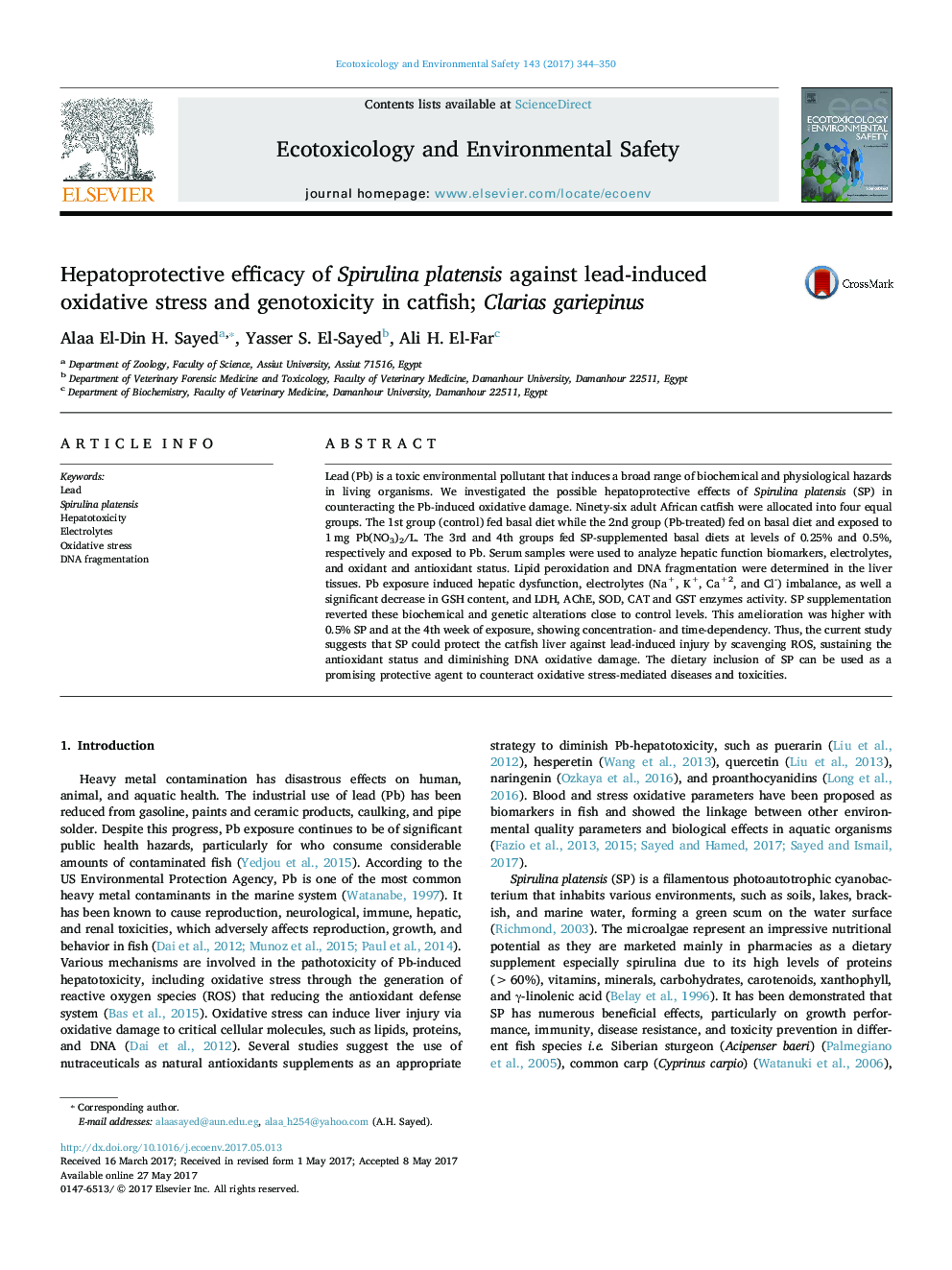| Article ID | Journal | Published Year | Pages | File Type |
|---|---|---|---|---|
| 5747568 | Ecotoxicology and Environmental Safety | 2017 | 7 Pages |
â¢lead-induced oxidative stress and genotoxicity in catfish.â¢Blood and oxidative stress parameters were used as biomarkers.â¢Hepatoprotective role of Spirulina platensis was recorded.
Lead (Pb) is a toxic environmental pollutant that induces a broad range of biochemical and physiological hazards in living organisms. We investigated the possible hepatoprotective effects of Spirulina platensis (SP) in counteracting the Pb-induced oxidative damage. Ninety-six adult African catfish were allocated into four equal groups. The 1st group (control) fed basal diet while the 2nd group (Pb-treated) fed on basal diet and exposed to 1Â mg Pb(NO3)2/L. The 3rd and 4th groups fed SP-supplemented basal diets at levels of 0.25% and 0.5%, respectively and exposed to Pb. Serum samples were used to analyze hepatic function biomarkers, electrolytes, and oxidant and antioxidant status. Lipid peroxidation and DNA fragmentation were determined in the liver tissues. Pb exposure induced hepatic dysfunction, electrolytes (Na+, K+, Ca+2, and Cl-) imbalance, as well a significant decrease in GSH content, and LDH, AChE, SOD, CAT and GST enzymes activity. SP supplementation reverted these biochemical and genetic alterations close to control levels. This amelioration was higher with 0.5% SP and at the 4th week of exposure, showing concentration- and time-dependency. Thus, the current study suggests that SP could protect the catfish liver against lead-induced injury by scavenging ROS, sustaining the antioxidant status and diminishing DNA oxidative damage. The dietary inclusion of SP can be used as a promising protective agent to counteract oxidative stress-mediated diseases and toxicities.
